2024 Eletre Review: Lotus like never before
A yellow Lotus. I should know a thing or two about this, given I’ve owned one for the last couple of years.
Nothing could be further from the truth, it turns out. The color and badge are familiar but this car is unlike any Lotus in history. Perhaps any car, full stop.
Lotus calls it the Eletre, a “Hyper SUV” that represents the first step on an ambitious sprint into an all-electric future for the British brand—a reset triggered by a gigantic investment from Chinese automotive powerhouse Geely.
We can expect a sedan and a more compact SUV to come riding on the Eletre’s new Electric Premium Architecture (EPA), followed by a two-seater sports car—all by 2026. By the end of 2030, Lotus aims to be selling 150,000 cars a year worldwide.
That’s a hundredfold increase on its recent best volume.
Achieving those numbers obviously requires a totally different approach to the one that has kept Colin Chapman’s company (barely) afloat for the last 75 years.
For one, no longer does Lotus see itself as an anachronistic example of British cottage industry. The new mantra is “born British, raised globally.” The company has its design HQ in the U.K., a technical center in Germany, plus further R&D and a mega-factory in China. The sheds at Hethel have been revitalized to create a modern facility that builds the Emira and Evija; England will remain the home of the company’s two-seaters.
Second, the Eletre is a massive—figuratively and physically—departure for the brand. It’s Lotus’ Porsche Cayenne moment but even more dramatic: the biggest, most complex, and heavyweight model ever to come from a company whose founding principles were “simplify and add lightness.”
“There’s no denying it’s the heaviest Lotus ever made,” admits PR manager Richard Yarrow. “But it is still a true Lotus.”
How so? According to the official blurb, “It takes the heart and soul of the latest Lotus sports car —the Emira—and the revolutionary aerodynamics of the all-electric Evija hypercar, and reinterprets them as a hyper-SUV. It delivers class-leading ride and handling, steering and aero performance—areas of automotive design and engineering where Lotus has both pioneered and dominated throughout its 75-year history.”
These are bold claims and, over the course of two days driving in EV-friendly Norway, I have the chance to test them all.
Lined up in the parking lot of the Oslo airport are around a dozen Eletres, mostly Solar Yellow, with a couple in Galloway Green and Kaimu Grey. Despite sitting in isolation, they look huge. At 5.1 meters (201 inches) long, 2.2m (86 inches) wide, and 1.6 m (63 inches) tall, one of these things could eat an Emira and still have plenty of room for seconds.
In silhouette there’s nothing too radical going on design-wise, but look closer and the Eletre reveals its network of channels and ducts that help it cheat the air. Lotus calls this “porosity.”By carefully managing airflow under, over, and through the bodywork, the Eletre achieves a drag coefficient of 0.26. Further tricks include a lower grille with flaps that only open when cooling demands, adding ten miles to the range; aero rims; and tiny rearview cameras in lieu of door mirrors (more on this later). Even the wheels (available in 20- to 23-inch sizes) have been designed to reduce lift and drag. A three-position rear spoiler deploys at speed to provide downforce alongside the fixed rear diffuser.
All this results in an almost total lack of wind noise when underway. The fitment of double-glazing in the windows and an electronic anti-noise system combine to make the Eletre eerily silent—the quietest car I’ve ever driven. I imagine it would take a Rolls-Royce Spectre to better it.
Lotus engineers considered, and even experimented with assorted fake noises, but ultimately decided against any artificial enhancement.
Given the almost total absence of sound from the drivetrain, tires, or airflow there’s a danger that any misfits in the cabin construction could make themselves heard, but no, this is definitely the best screwed-together Lotus I’ve ever driven.
It’s also the most plush, by a considerable margin. Neatly stitched leather, Alcantara, and recycled materials are deployed to great effect in a cabin that, for the most part, strikes the right balance between tech and tactility. The dashboard essentially comprises three zones. Ahead of the driver is a narrow strip displaying key information (along with a head-up display) and a “blade of light” that changes color to alert the driver to factors such as battery state of charge. The display and blade are mimicked on the passenger side where the co-pilot has access to infotainment controls. In the center is a 15.1-inch OLED high-definition touchscreen.

That display is the nerve center of Eletre, where Lotus’ in-house Hyper OS software is used to control all onboard systems from navigation to audio, climate control, and the intricacies of car setup. Speed is of the essence so—IT nerd alert—Lotus employs two Qualcomm 8155 Snapdragon processors to run it. Unreal Engine technology is used to render real-time 3D animations on screen.
It does indeed work fast, although not without a few bugs that Lotus promises will be fixed with over-the-air (OTA) updates before customer cars are delivered. If you dislike touchscreens, there are beautifully machined switches to control cabin temperature, while a “virtual personal assistant” responds to natural speech requests. The system, wisely, will recognize whether the driver or a passenger is speaking and respond accordingly (only raising a window or adjusting the climate control for the occupant who made the request, for example).
In fact, one might argue that the best seats belong to the passengers. (A sentence never uttered about any prior Lotus.) The rear legroom and headroom are exceptional, and customers who opt for a four-seat setup give each rear-seat occupant their own touchscreen, wireless charging pad, and cupholder, along with a more supportive seatback.
Specs: 2024 Lotus Eletre S / R
• Price: $134,000 / $153,000 (est., based on U.K. prices)
• Powertrain: 112-kW lithium-ion battery; twin permanently magnet electric motors (one per axle)
• Horsepower: 603 / 905 hp
• Torque: 524 / 726 lb-ft
• Layout: All-wheel-drive, four-door, four/five-passenger SUV
• EPA-rated fuel economy: TBC
• Range: 373 / 304 miles (WLTP)
• 0–62 mph: 4.5 / 2.95 seconds
• Competitors: BMW iX, Mercedes-Benz EQS SUV, Audi Q8 e-tron
Back up front, the seats perform a neat trick in addition to being fully adjustable every which way. Switch to Sport mode and the side bolsters inflate, providing a gentle hug to hold you in place. In this mid-range £104,500 ($134,000, although U.S. prices will be confirmed nearer to the 2024 on-sale date) Eletre S, it also makes all 603 horsepower available. Not that there’s much chance to use it. Norway’s country roads are perfectly-paved and picturesque, but they have very low speed limits, which are rigidly enforced and fines can extend to $1000 or more.
Such velocity-aversion might be one of the reasons why EVs have been embraced so heartily in Norway. Last year, 80 percent of new cars sold here were electric. As they trickle along at 40 mph they’re likely at their most efficient.
Lotus claims that its 112-kWh battery packs should give a range of up to 373 miles under Europe’s WLTP system, but in the real world, 300 seems more likely.
There doesn’t appear to be a huge gulf between Tour and Range modes, though driving in Sport will see you headed to a charger sooner. On that topic, the Eletre uses an 800-volt architecture and can charge at up to 350 kW, allowing a top-up from 10-80 percent in 20 minutes in ideal conditions.
Juggling between drive modes also adjusts the Eletre’s attitude, raising or lowering the ride height to aid with aerodynamics or to add extra ground clearance in the Off Road setting. The degree of regenerative braking can be selected and there’s the option to combine the different performance, ride, and regen settings in a custom program.
At Norway’s leisurely pace, Touring seems to work just fine, offering up exemplary ride comfort, tight body control, and still plenty of performance for overtaking. The S model, for the record, takes 4.6 seconds to reach 62 mph. There are EVs that do the same sprint more dramatically, but it is the Eletre’s ability to go from 50 mph to 75 mph in under two seconds that is impressive to the point of alarming. (Especially when there’s the prospect of a massive price for being caught over the limit.)
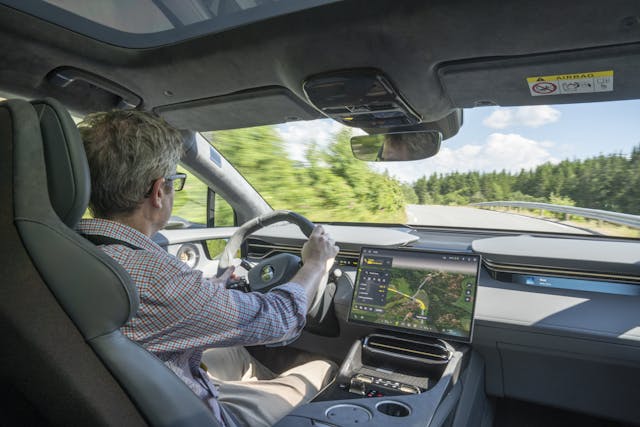
The Eletre isn’t one of those cars that shrinks around you. It always feels its size, and judging width in particular isn’t that easy with the rear-facing cameras. You have to look at the displays in the doors, which are just that bit lower than where the mirrors would be, and despite the crisp images, the action takes getting used to. This won’t trouble U.S. buyers, who will have conventional mirrors instead.
The route we take isn’t especially twisty, but the unusual squircle-shaped steering wheel turns in fast and with accuracy, requiring only 2.5 rotations lock-to-lock. It’s an electro-mechanical system, which Lotus has rigid-mounted for optimum feel, and it only saps power on demand. The turning circle is unexpectedly tight for such a big car, even without the optional rear-wheel steering installed.
There will be buyers who care less for this sort of involvement and prefer to let the car do the work, which is where the Eletre’s suite of deployable LIDAR detectors, radar sensors, and cameras comes in. In theory, the Eletre is capable of Level 4 autonomous driving, but, as so few countries allow it, the car will launch with a Level 2-plus system. Essentially that means a Highway Assist feature that will keep the Eletre in-lane and at a safe distance from the car ahead at speeds from 20 to 90 mph.
Lotus does imagine a time when the car could fully take control, leaving driver and passengers to enjoy big-screen entertainment, so the car has been future-proofed with an optional 2150-watt Dolby Atmos surround sound audio, powered by 23 Kef speakers (the standard systems has 1380 watts and 15 speakers). The definition and totally immersive quality of music is like nothing I’ve ever experienced. Listening to remastered classics gives the feeling of being at the heart of a live show, while new music engineered for Atmos sends beat drops spiraling around the cabin.
Another way to take your breath away would be to opt for the £120,000 ($153,000) Eletre R. With 905 horsepower available, together with an additional Track driving mode, it performs in very un-SUV-like fashion.
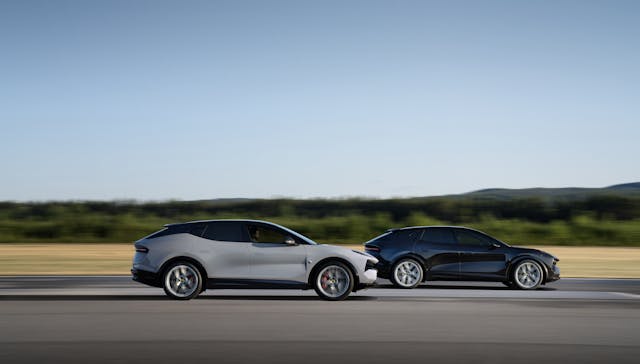
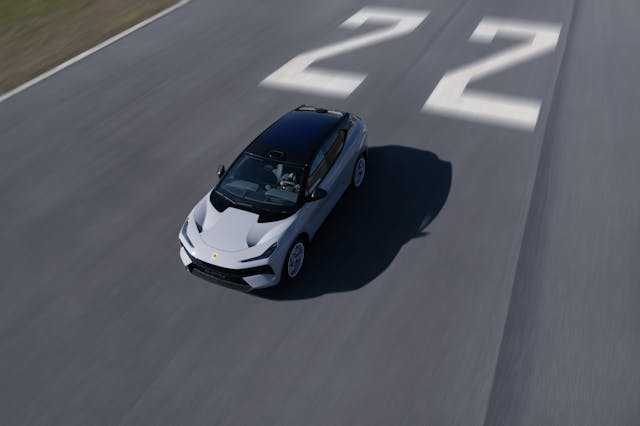
Lotus has wisely hired an airfield to allow the R’s combination of brutal acceleration and baffling agility to be experienced, albeit briefly. First there’s a high-speed slalom course, where the Eletre R nimbly sweeps between cones, with barely there body roll, even on an effective hairpin. There’s tire squeal and a smidge of understeer on this tight turn, but you’d never know you’re managing the inertia of over 5500 pounds of mass.
Next is a launch in Track mode from 0 to 100 mph. It’s as simple as putting one’s left foot on the brake and right foot fully to the floor on the accelerator and then releasing the left. The Eletre is catapulted forward, forcing me back into the seat as it passes 62 mph in 2.9 seconds and simply doesn’t let up.
The only time I’ve ever felt this kind of acceleration before was during a reverse-bungee where I was fired up into the sky over London. That’s an experience I never want to repeat and I’m not convinced that Eletre R owners would want to hard-launch their cars more than once either.
It is, however, a remarkable demonstration of engineering. And that is what Lotus has always been about.
2024 Lotus Eletre
Highs: Insanely swift, surprisingly agile, awesome audio, feels high-quality throughout.
Lows: Could be prettier. Despite masking its mass well, it’s the heaviest Lotus ever.
Takeaway: An entirely new chapter for Lotus, the Eletre is an extremely competent all-rounder EV with class-leading gizmos.
***
Check out the Hagerty Media homepage so you don’t miss a single story, or better yet, bookmark it. To get our best stories delivered right to your inbox, subscribe to our newsletters.
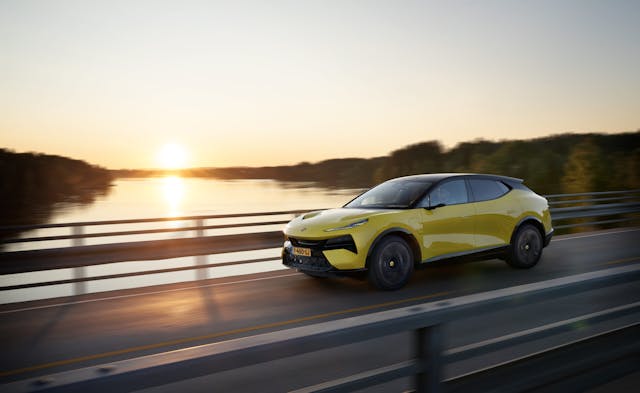
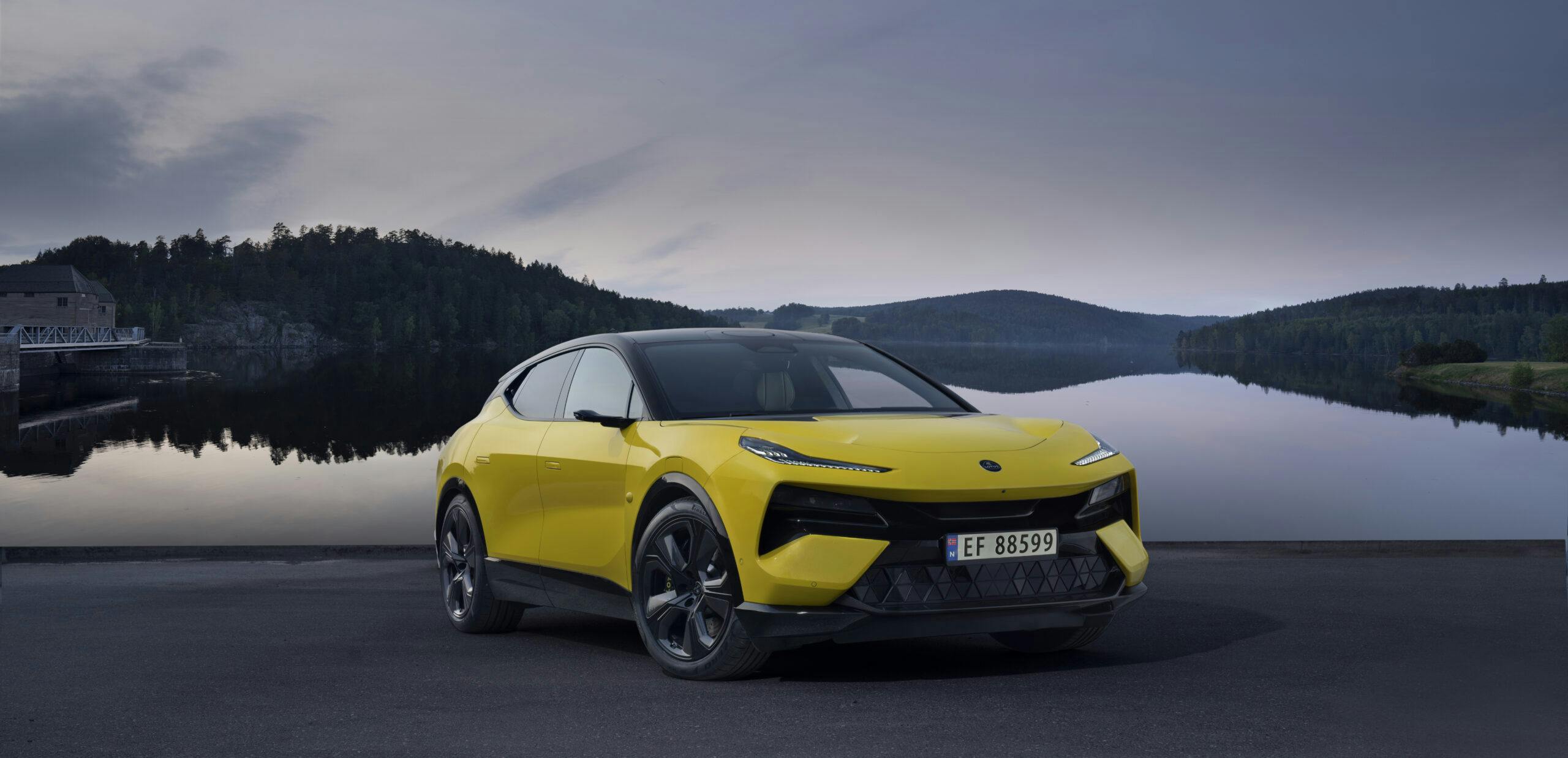
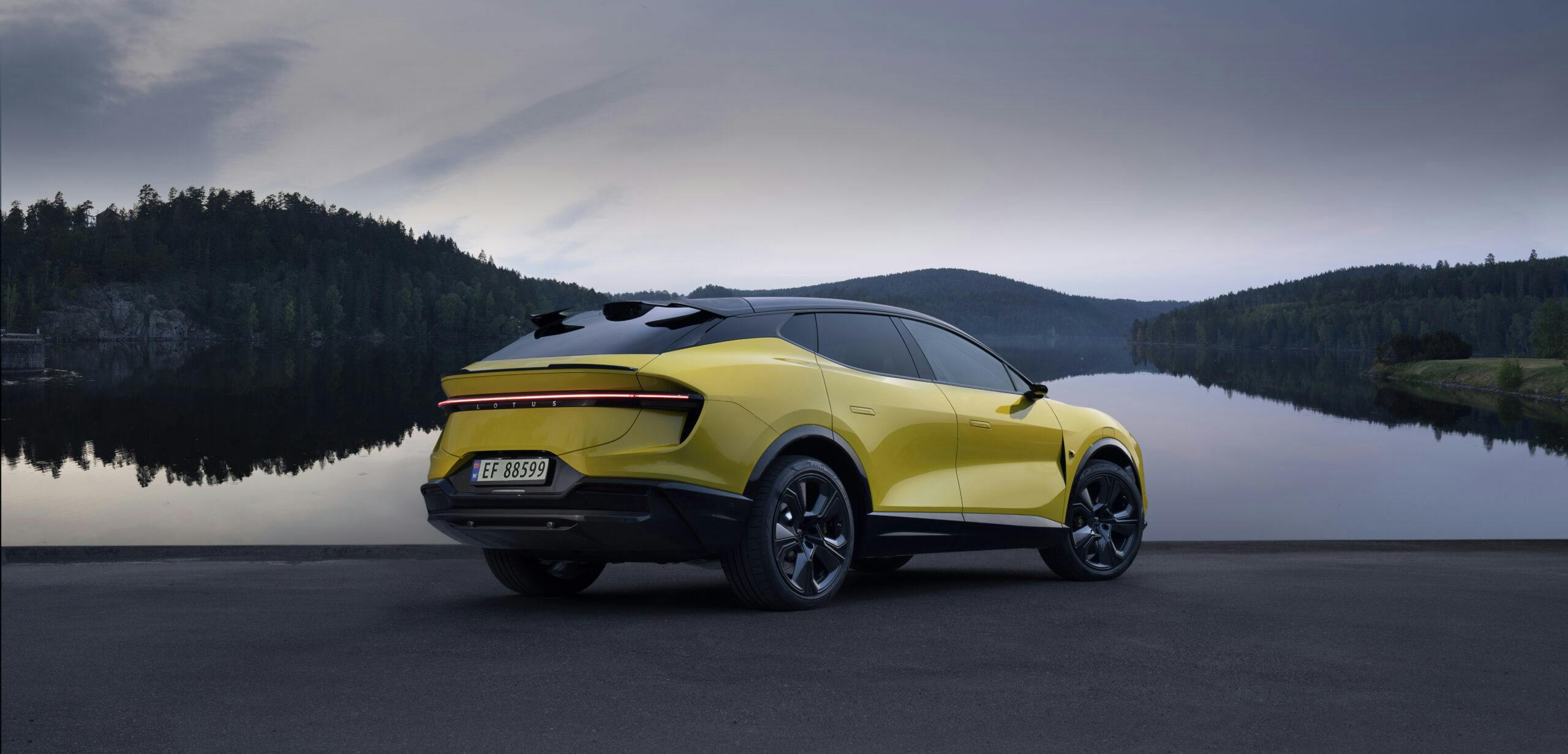
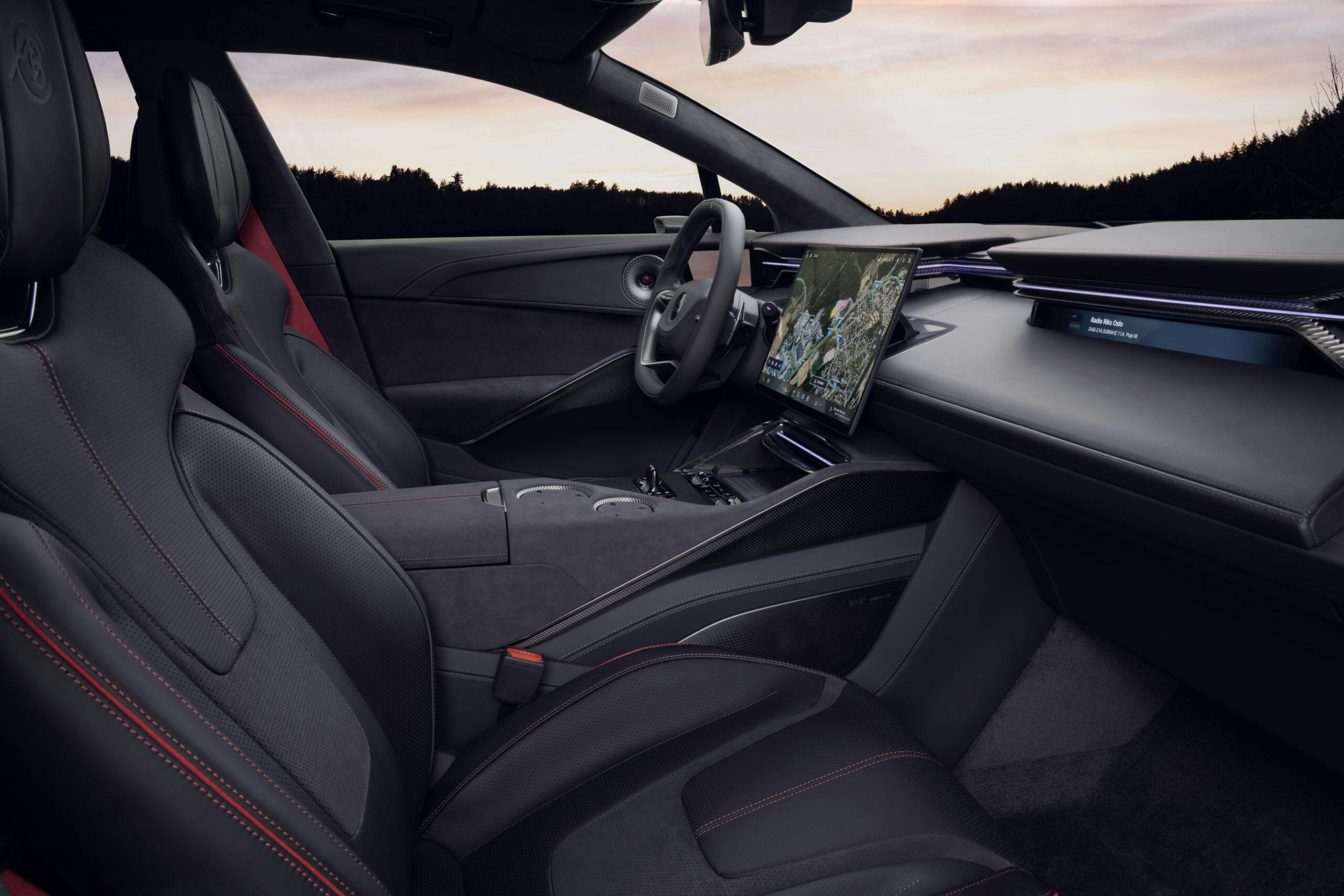

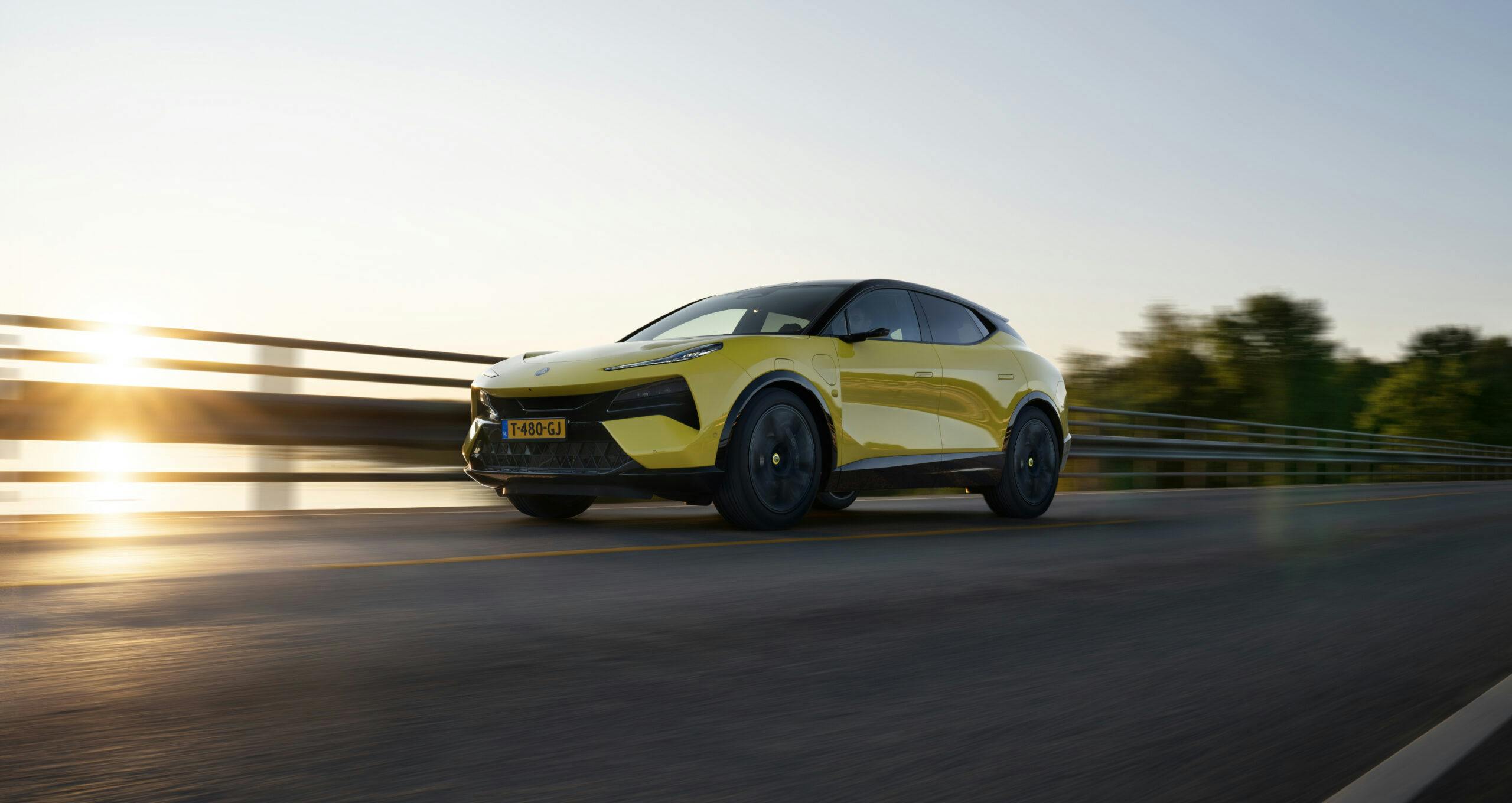

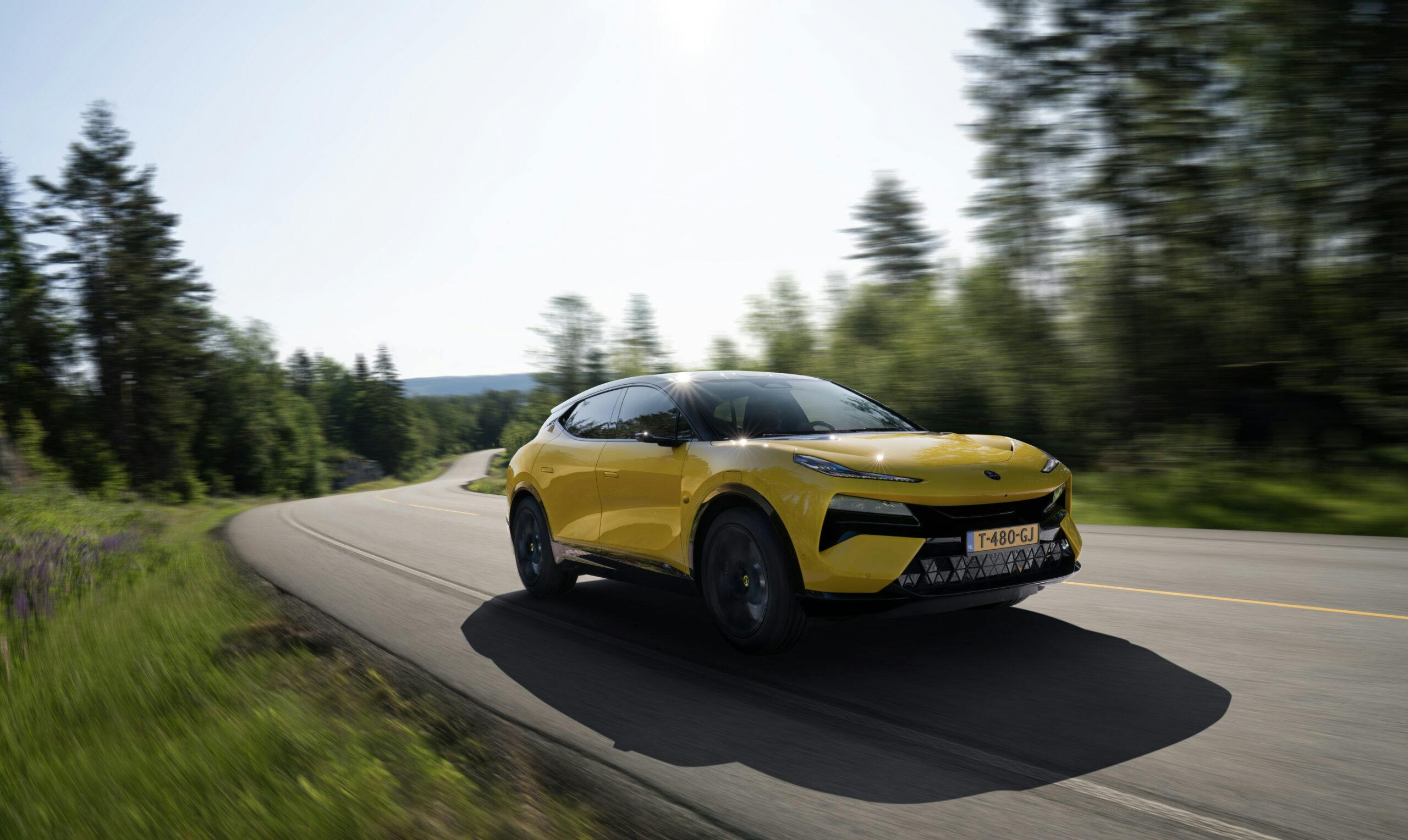

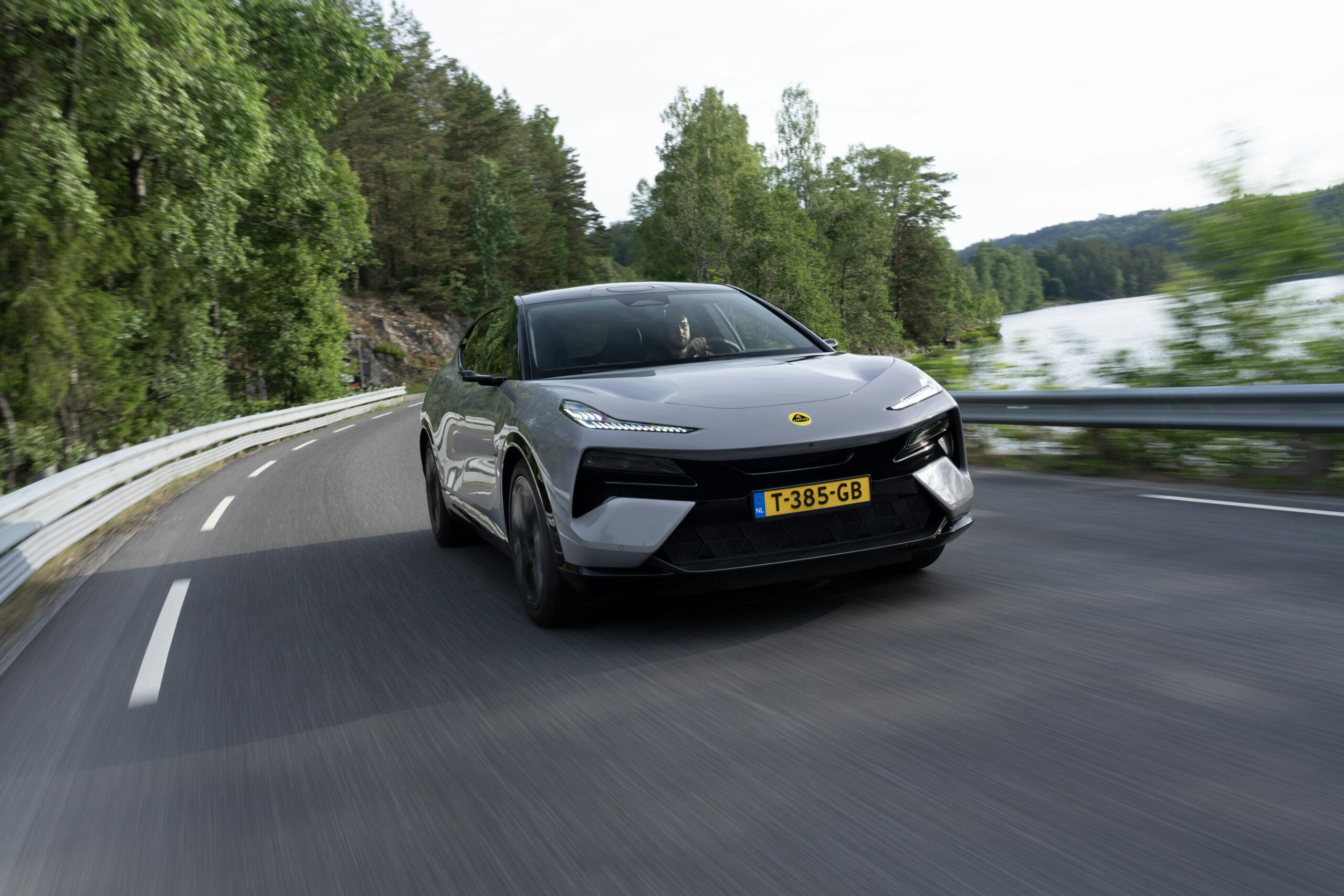
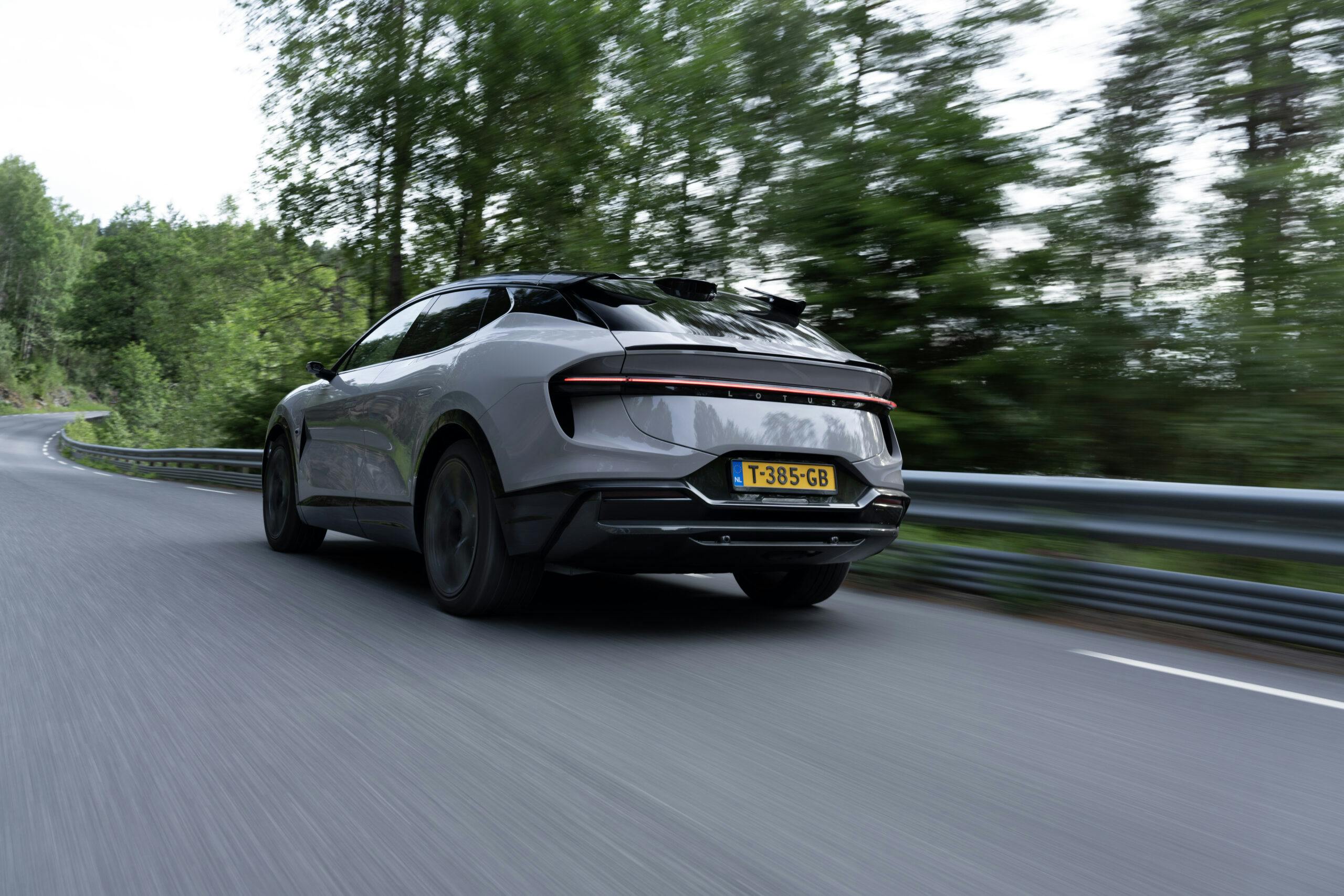

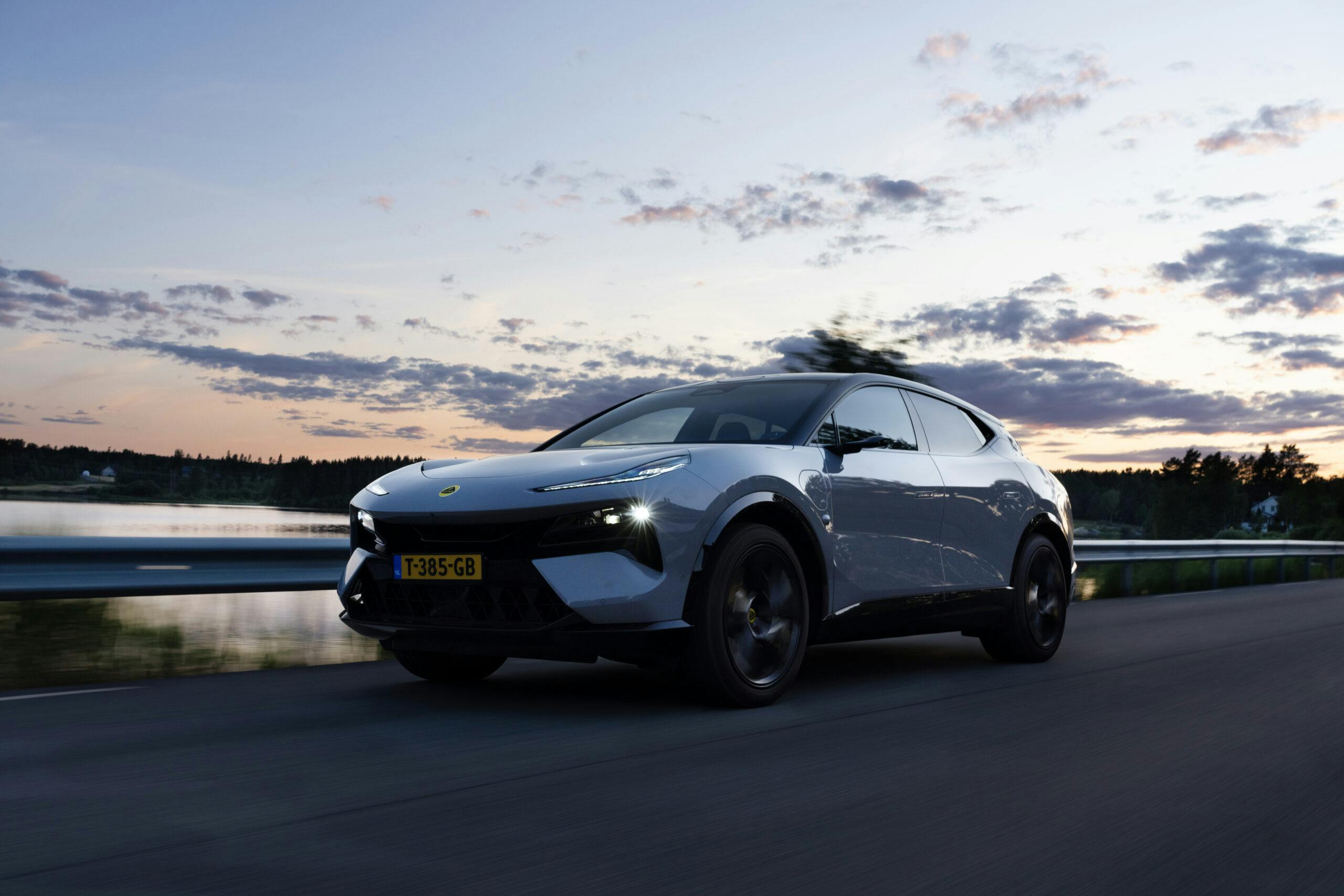
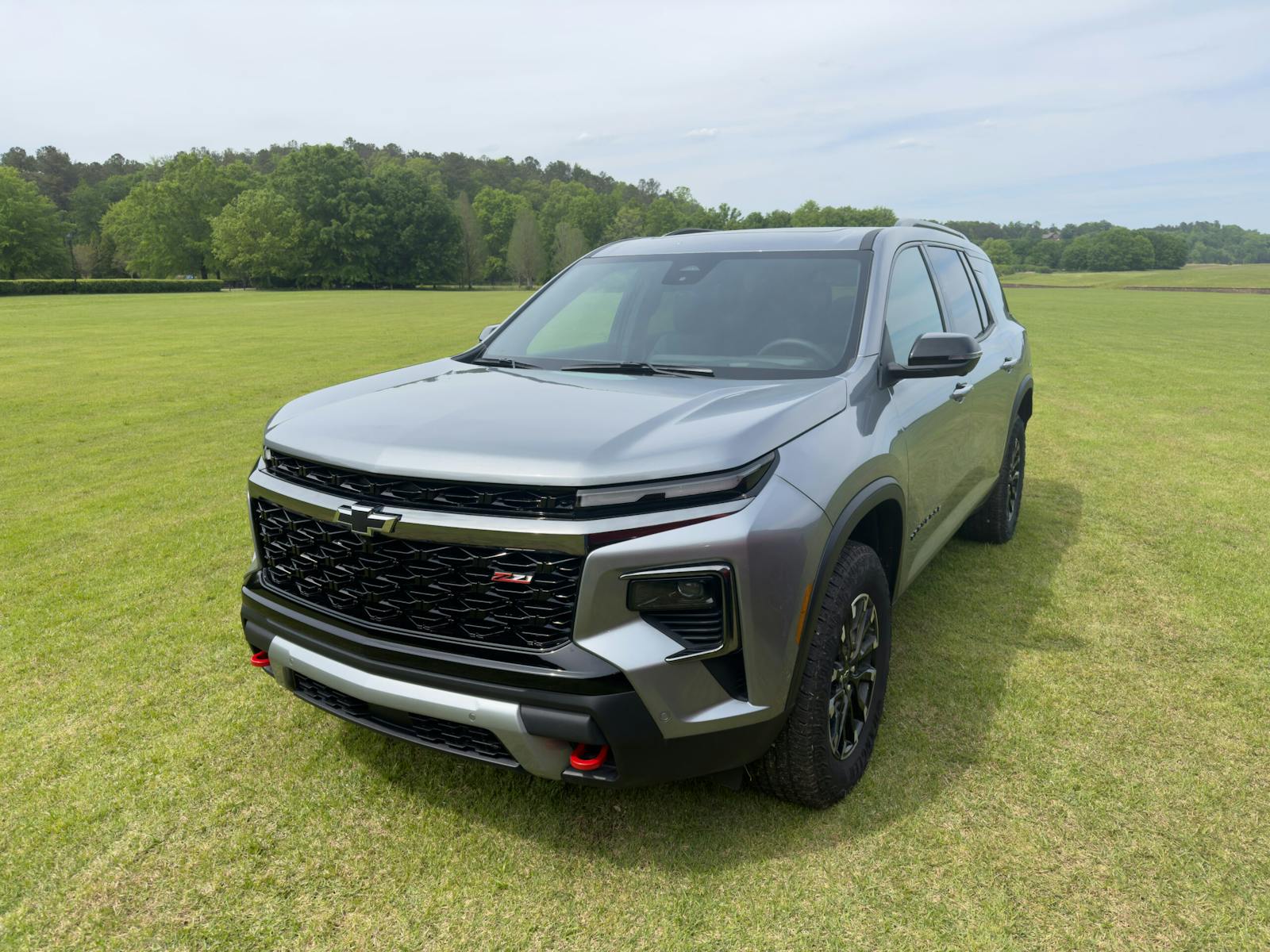

Another crossover? Another bloated EV? Who cares? Sad to see Lotus go this way. Am guessing engine is not a stressed member to save weight like the innovative Lotus 56.
Looks like an exceptional EV/SUV. But it’s not a Lotus. Maybe one day Geely will do the right thing and sell the brand name to a company that is willing to produce cars that merit the name. Preferably a cottage industry company based in the UK similar to Morgan and Caterham. Another formerly great British car brand, MG, exists today only in name, and now the same is happening with Lotus. It’s very sad. And no matter how much the motoring press puts a positive spin on it, the rise and ultimate takeover of all electric vehicles is not going to be good for car enthusiasts, particularly those who relish driving cars with manual transmissions.
The death of Lotus. Sad.
I don’t mind EVs or SUVs (let’s be honest, they make it possible for manufacturers to produce ridiculous sports/hyper cars, thanks to what they do for emission/efficiency standards) but don’t say “it’s pure Lotus” if it’s 5500 lbs and rides high.
I don’t understand car makers. An investor in Lotus looks at the market in which every car company makes a 6,000 pound SUV, and they all look like every other SUV, and that investor says to itself: let’s make an SUV that is indistinguishable for every other SUV, slap the Lotus nameplate on it and it will sell like hotcakes! No matter how many electronic gadgets you put on a 6,000 pound car, it will drive and handle like a 6,000 pound car.
“There’s no denying it’s the heaviest Lotus ever made,” admits PR manager Richard Yarrow. “But it is still a true Lotus.”
If the definition of Lotus was by the pound then this would be the most Lotus that Lotus has ever been. A true Lotus? Nope, it’s a Chinese car from Geely with a “legacy” badge slapped on it like Volvo.
You got that right! Not interested.
It’s high time that all car reviews include the weight of the vehicle, especially now that we are featuring electric vehicles. Weight is still a huge factor in most aspects of driving, especially crashes (when you are on the receiving end).
Message to Hagerty: show the weight in the Specs section, please!
Another auto manufacturer with a sporting history going all in on a heavyweight SUV. I can appreciate the automotive journalism on this modern trend. But what I see here is just one more ‘angry-faced’ high priced, overly finicky SUV – which looks far too similar to all the rest of the vehicles in this category. No wonder I stopped going to new car shows 25 years ago.
In related news, Geely will buy Mini and turn it into a dually V8 diesel-powered super duty pickup with a 10-foot bed and 60,000 lb towing capacity; Geely will also purchase Harley-Davidson which will rebrand itself as a center console jet-powered deep V fishing boat; and it is also reviving the Oldsmobile brand… as a maker of organic potato chips (“This sure as hell ain’t your father’s Oldsmobile!!!”) because… China.